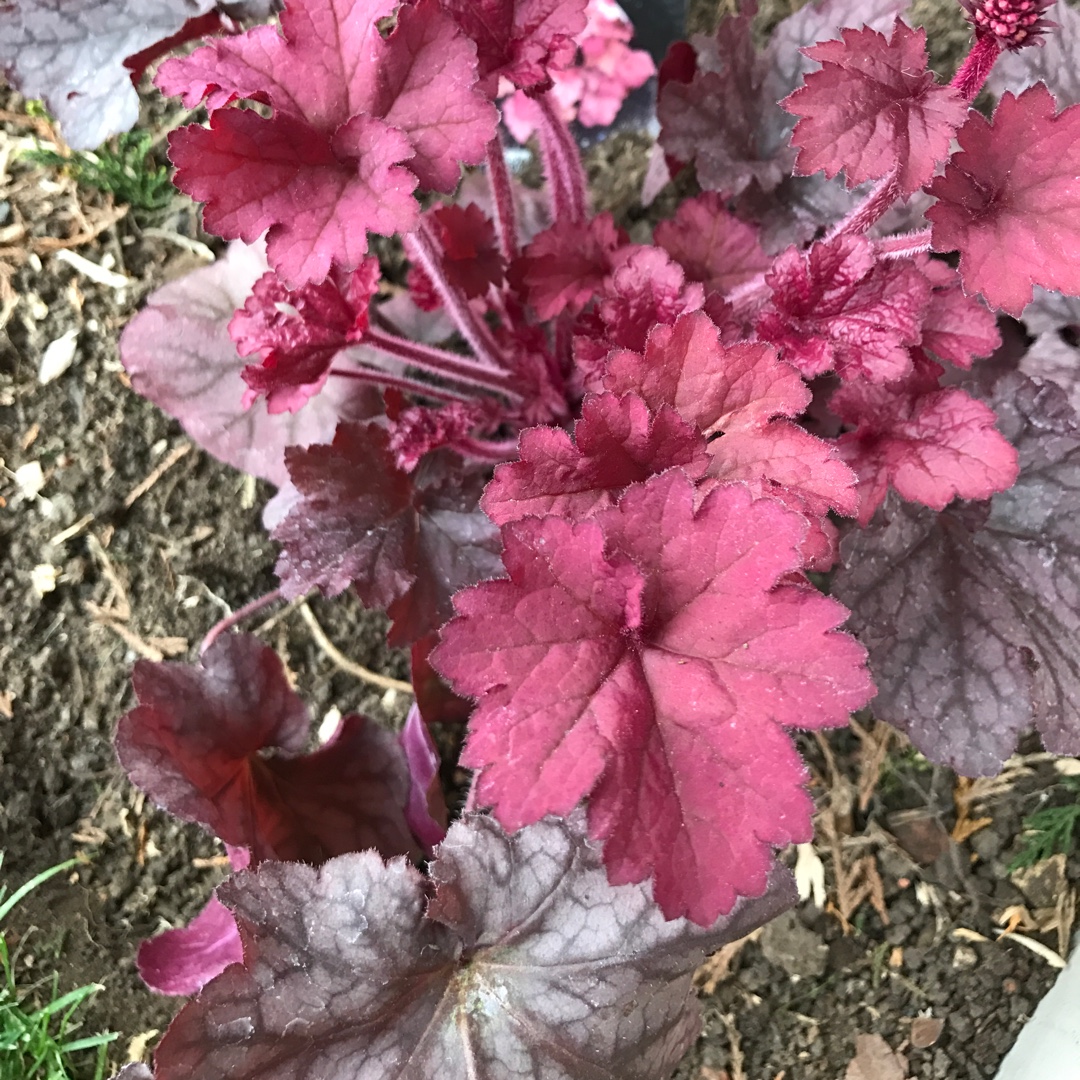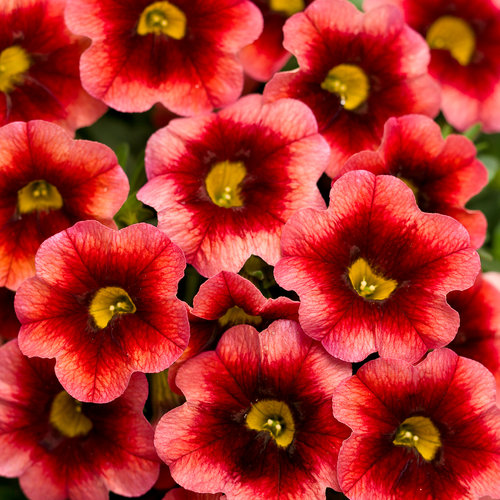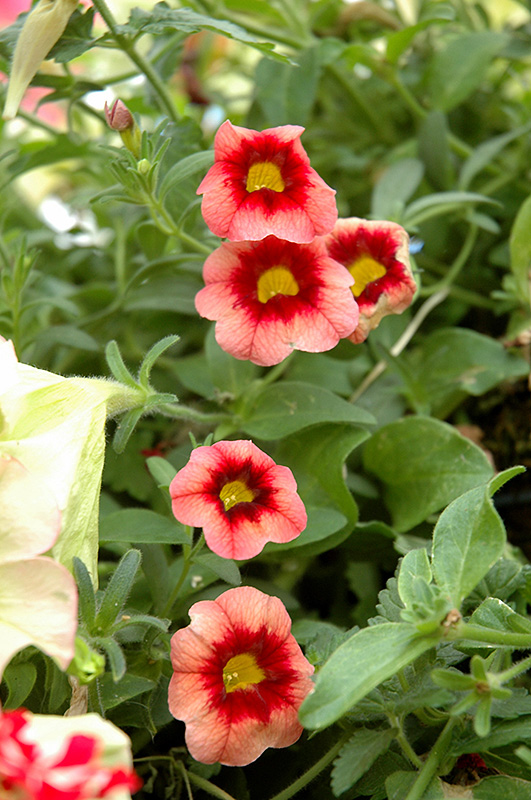Coralberry Coral Bells
If you're looking for a plant that will not only add beauty to your garden but also attract wildlife, then coralberry coral bells may be the perfect choice for you. This stunning plant has become increasingly popular among gardeners for its unique color and texture, as well as its ability to attract birds and butterflies. In this article, we'll take a closer look at the benefits of coralberry coral bells, as well as some tips on how to care for them.
Pain Points Related to Coralberry Coral Bells
Gardening can be challenging, especially when it comes to finding the right plants for your specific needs. Some gardeners struggle to find plants that are not only aesthetically pleasing but also easy to care for and attract wildlife. Others may find it challenging to keep their plants healthy throughout the year. Coralberry coral bells address these pain points by being relatively low-maintenance, beautiful, and able to attract wildlife.
Target of Coralberry Coral Bells
Coralberry coral bells are a type of perennial plant that belongs to the Saxifragaceae family. They thrive in temperate climates and prefer partial shade, making them an excellent option for gardens in areas that receive a lot of sunlight. The plant typically grows up to 2 feet tall and has leaves that range in color from green to burgundy, depending on the variety. The flowers are typically small and range in color from white to pink, appearing in early summer and lasting well into the fall.
Summary of Main Points Related to Coralberry Coral Bells
Coralberry coral bells are a beautiful and low-maintenance plant that attracts wildlife. They are perfect for gardens in areas that receive a lot of sunlight and thrive in temperate climates. The plant typically grows up to 2 feet tall and has leaves that range in color from green to burgundy, depending on the variety. The flowers are typically small and range in color from white to pink.
The Benefits of Coralberry Coral Bells
Coralberry coral bells are an excellent choice for gardeners who are looking to add some color and texture to their garden. The plant's unique foliage is its main attraction, as it comes in a range of colors, including greens, purples, and even black. In addition to its beauty, coralberry coral bells are also known for their ability to attract birds and butterflies to the garden.
One personal experience I've had with coralberry coral bells was in my own garden. Not only did the plant add some much-needed color to my garden, but it also attracted an array of birds and butterflies that I had not seen before. I enjoyed watching them come and go throughout the day, and it added a new dimension to my gardening experience.
When it comes to caring for coralberry coral bells, they are relatively easy to maintain. They prefer well-drained soil and partial shade, making them ideal for gardens with varying degrees of sunlight. It's also recommended to water the plant regularly during the growing season, as it prefers slightly moist soil.
How to Plant Coralberry Coral Bells
The best time to plant coralberry coral bells is in the early spring, after the last frost. The plant should be planted in well-draining soil, and it's recommended to add compost to the soil before planting. Coralberry coral bells prefer partial shade, so they should be planted in an area of the garden that receives some sunlight each day.
When planting coralberry coral bells, it's essential to keep the plant well-watered throughout the growing season. Regular watering will help ensure that the plant thrives and produces an abundance of foliage and flowers. It's also recommended to add a layer of mulch around the plant to help retain moisture in the soil.
Attracting Wildlife with Coralberry Coral Bells
Coralberry coral bells are known for their ability to attract wildlife to the garden. Birds and butterflies are particularly drawn to the plant's flowers and foliage, making it an excellent choice for gardeners who enjoy observing wildlife. By planting coralberry coral bells in your garden, you can attract a range of bird species, including finches, sparrows, and chickadees. Butterflies are also known to be drawn to the plant, particularly the painted lady butterfly.
Tips for Caring for Coralberry Coral Bells
Coralberry coral bells are a relatively low-maintenance plant, but they still require some care to ensure their health and lifespan. Here are a few tips for caring for coralberry coral bells:
- Plant coralberry coral bells in well-draining soil and partial shade
- Water the plant regularly, particularly during the growing season
- Add a layer of mulch around the plant to retain moisture in the soil
- Protect the plant from pests and diseases, such as slugs and snails
- Prune the plant regularly to promote healthy growth and prevent disease
Question and Answer Section
Q: How often should I water coralberry coral bells?
A: Coralberry coral bells should be watered regularly, particularly during the growing season. It's recommended to keep the soil slightly moist to ensure the plant thrives.
Q: What is the best time to plant coralberry coral bells?
A: The best time to plant coralberry coral bells is in the early spring, after the last frost. This will give the plant sufficient time to establish its roots before the heat of the summer arrives.
Q: How do I protect my coralberry coral bells from pests?
A: There are several ways to protect your coralberry coral bells from pests, including using organic pest control methods, such as neem oil and insecticidal soap. You can also add a layer of mulch around the plant to discourage pests and diseases.
Q: Can I propagate coralberry coral bells?
A: Yes, coralberry coral bells can be propagated by division in the spring or fall. Simply dig up the plant and separate the roots into sections, then replant in well-draining soil.
Conclusion of Coralberry Coral Bells
Coralberry coral bells are a beautiful and low-maintenance plant that is perfect for gardens in areas that receive a lot of sunlight. They are known for their unique foliage and ability to attract wildlife, making them an excellent choice for gardeners who want to add some color and life to their garden. With a little care and attention, coralberry coral bells can thrive in your garden for years to come.
Gallery
Heuchera 'Coralberry' (Indian Summer Series), Alumroot 'Coralberry' In

Photo Credit by: bing.com / heuchera coralberry gardentags
Superbells® Coralberry Punch™ - Calibrachoa Hybrid | Proven Winners

Photo Credit by: bing.com / calibrachoa superbells coralberry coral bells seulement trailing provenwinners annuelles
Coralberry | AustinTexas.gov
Photo Credit by: bing.com / coralberry symphoricarpos orbiculatus austintexas gov green plant innovation tips into these look great
Coralbells | Better Homes & Gardens

Photo Credit by: bing.com / heuchera bells berry coralbells perennial perennials shade clay growing foliage havlis
Superbells® Coralberry Punch Calibrachoa (Calibrachoa 'Superbells

Photo Credit by: bing.com / punch calibrachoa coralberry superbells flowers plant